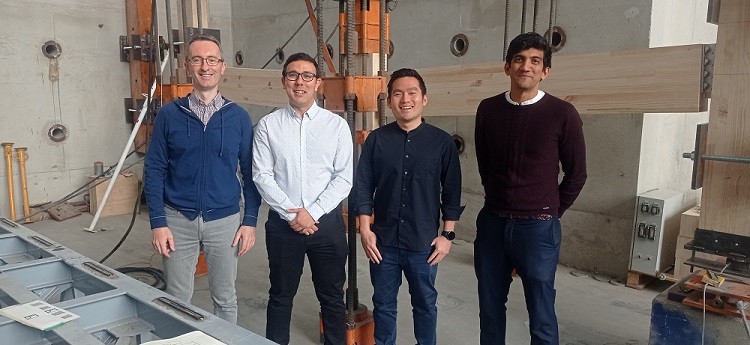Un equipo del Instituto ICITECH de la Universitat Politècnica de València (UPV) ha publicado en Nature the latest results of his ‘radical’ proposal to achieve ultra-resistant buildings capable of withstanding extreme situations caused by natural disasters—floods, landslides, explosions, ageing, or inadequate maintenance and conservation. This proposal adds a final line of defence to the design of building structures to prevent catastrophic collapses.
The new method is inspired by how lizards protect themselves from predators by shedding their tails when attacked.
Current design methods are based on improving connectivity between structural components. In the event that a component fails, this connectivity allows the loads supported by the failing components to be redistributed to the rest of the structural system. Although these methods are effective in the case of small initial failures, they can increase the risk of progressive collapse after large initial failures, thus leading to complete or large-scale collapses. This was the case, for example, in the Champlain Towers and in the collapse of a building in Peñíscola in 2021, or in the Iranian city of Abadan in 2022. And this is what the proposal put forward by the UPV’s ICITECH avoids.
Our innovative design method provides a solution to overcome this alarming limitation and achieve more resilient buildings, capable of isolating the collapse to only the part of the structure that has suffered the initial failure, and safeguarding the rest of the building. The new design method has been verified with a test on a real building. It is therefore the first solution against the spread of collapse in buildings after major initial failures that has been tested and verified on a real scale. The application of the new design method will prevent catastrophic collapses, thus protecting human lives and minimising the material costs that a complete collapse of the structure would entail,” says José M. Adam, co-author of the publication with Nirvan Makoond, Andri Setiawan and Manuel Buitrago, all members of ICITECH at the UPV.
Some ‘fuses’ prevent total collapse
The key to the method devised by the UPV team lies in using the concept of structural fuse, which allows damaged parts of a building to be isolated in order to prevent major failures from spreading throughout the entire structure.
‘This new philosophy is similar to the way electrical networks are protected against overloads, by connecting different segments of the network using electrical fuses. With our designs, the building maintains structural continuity under normal operating conditions, but is segmented when the spread of a failure is inevitable, thus reducing the extent of the collapse and preventing total collapse,’ says Nirvan Makoond.
‘The implementation of the method will have a slight, or even negligible, impact on the cost of the structure, as it uses conventional construction details and materials,’ says Andri Setiawan.
In its current state of development, the new design by these researchers can be applied to virtually any new building. ‘Its effectiveness has been verified and demonstrated for buildings with prefabricated concrete structures. We are currently working on applying the methodology to buildings constructed with in-situ concrete and to buildings with steel structures,’ concludes Manuel Buitrago.
Validated in a pioneering global trial
The development of this new design method is one of the most notable results to date of the Endure project, funded by the European Research Council (ERC) with a Consolidator Grant of more than €2.5 million. It was precisely within the framework of this project that a pioneering global trial was carried out in June last year to validate its performance. The tests were carried out on a full-scale building, in which a major initial failure in the structure was isolated in one part of the building, preventing it from spreading to the entire structure. It should be noted that the research is carried out entirely at the UPV, with the four authors of the publication also being researchers at the UPV.
Cover of Nature
Nature has published the work of the team from the ICITECH Institute at the UPV on the cover of today’s issue. Furthermore, this is the first time that the journal has published a research article in the field of building design and construction.
First steps thanks to a project funded by the BBVA Foundation
The seed for this project was planted by a Leonardo Grant awarded to José M. Adam by the BBVA Foundation in 2017. Now, seven years later, the researcher at ICITECH – UPV is continuing with this revolutionary project, in collaboration with the European Research Council, which will enable safer buildings to be constructed and save human lives.
Endure will be developed until 2026 at the ICITECH structures laboratory at the Polytechnic University of Valencia, one of the largest in Europe for testing large structural elements.
